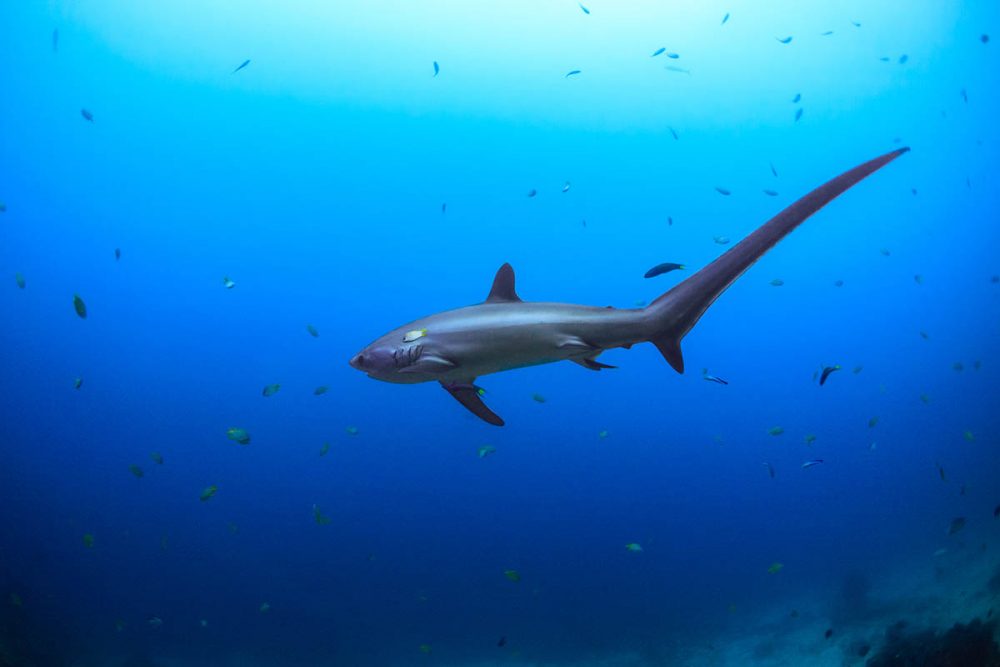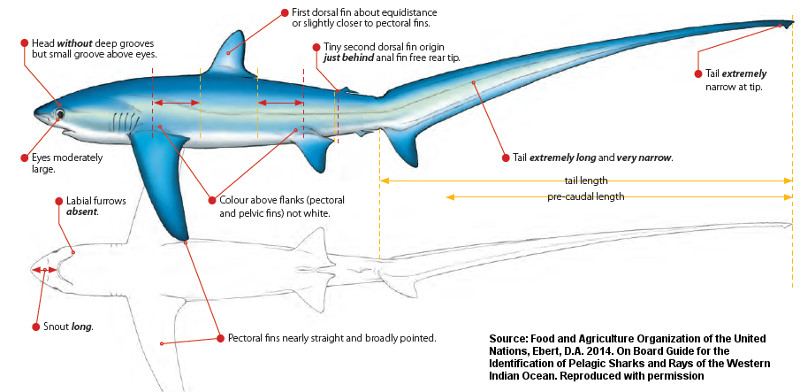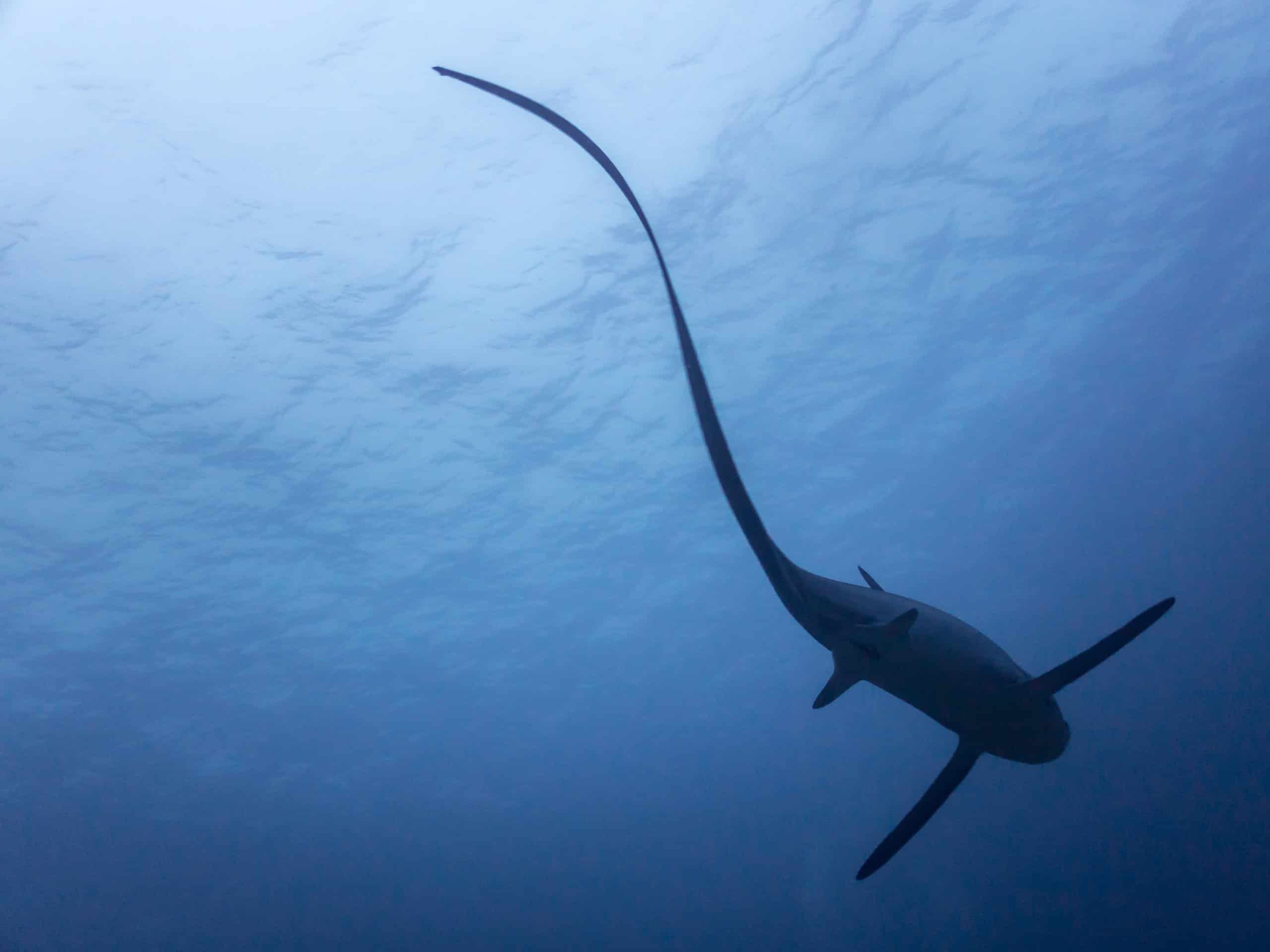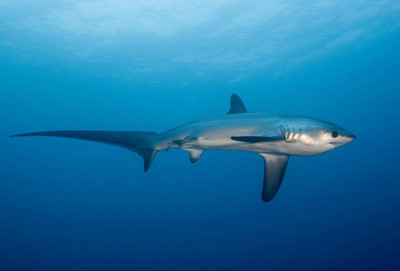The Pelagic Thresher Shark (Alopias pelagicus)
Posted by Diver: William Taylor on on 8th Feb 2023
The Pelagic Thresher Shark (Alopias pelagicus) is a species of shark that inhabits the open ocean and is known for its unique elongated tail fin, which can reach up to half its body length. This species is part of the family Alopiidae, which also includes the bigeye thresher and the common thresher shark. Pelagic thresher sharks have been spotted frequently in San Diego but are found in tropical and temperate waters throughout the world, typically near the surface and in areas of strong ocean currents.

One of the key features that sets the pelagic thresher shark apart from other shark species is its elongated tail fin. This adaptation is thought to serve a number of functions, including attracting prey, communicating with other sharks, and defending against predators. The elongated tail is also used as a whip-like weapon to stun prey, allowing the shark to easily catch and consume small fish and squid.

Pelagic thresher sharks are known to feed on a variety of prey, including small bony fish, squid, and crustaceans. They are able to use their long tail to efficiently catch prey, and they have a keen sense of hearing and electroreception that helps them locate their food. They have a sleek, streamlined body that is well-suited for fast swimming, allowing them to chase down fast-moving prey.

Despite their unique adaptations and predatory capabilities, pelagic thresher sharks are considered to be vulnerable to extinction. They are often caught as bycatch in commercial fishing operations, and their fins are highly valued for use in shark fin soup. In addition, pelagic thresher sharks are also vulnerable to overfishing due to their slow rate of reproduction and late maturity.

To protect pelagic thresher sharks, it is important to better understand their biology, ecology, and behavior. Research on this species is ongoing, but some studies have shown that they have a preference for certain habitats and that they are more likely to be found in areas with strong ocean currents. Other studies have shown that they are able to reproduce slowly and that their populations are slow to recover from fishing pressures.

Conservation efforts to protect pelagic thresher sharks must also address the demand for their fins and other body parts. This may include education and outreach programs to reduce demand for shark fins and other shark products, as well as regulation of commercial fishing operations to reduce bycatch and overfishing of this species. Additionally, the implementation of marine protected areas and other conservation measures can help to preserve important habitats for pelagic thresher sharks and other species.
The pelagic thresher shark is a unique and fascinating species that plays an important role in the open ocean ecosystem. However, this species is facing numerous threats, including bycatch, overfishing, and the demand for its fins and other body parts. To protect this species, it is critical to better understand its biology, ecology, and behavior and to implement effective conservation measures to reduce the threats it faces. Through continued research and conservation efforts, we can help ensure the survival of this remarkable shark species for future generations to enjoy.
Check out our website for Scuba Gear.
Call us we have daily specials on all brands of gear, we might just be having a sale at theDiveCenter.
Feel free to contact us for expert Scuba advice and we are open every day.
1-888-728-2252

